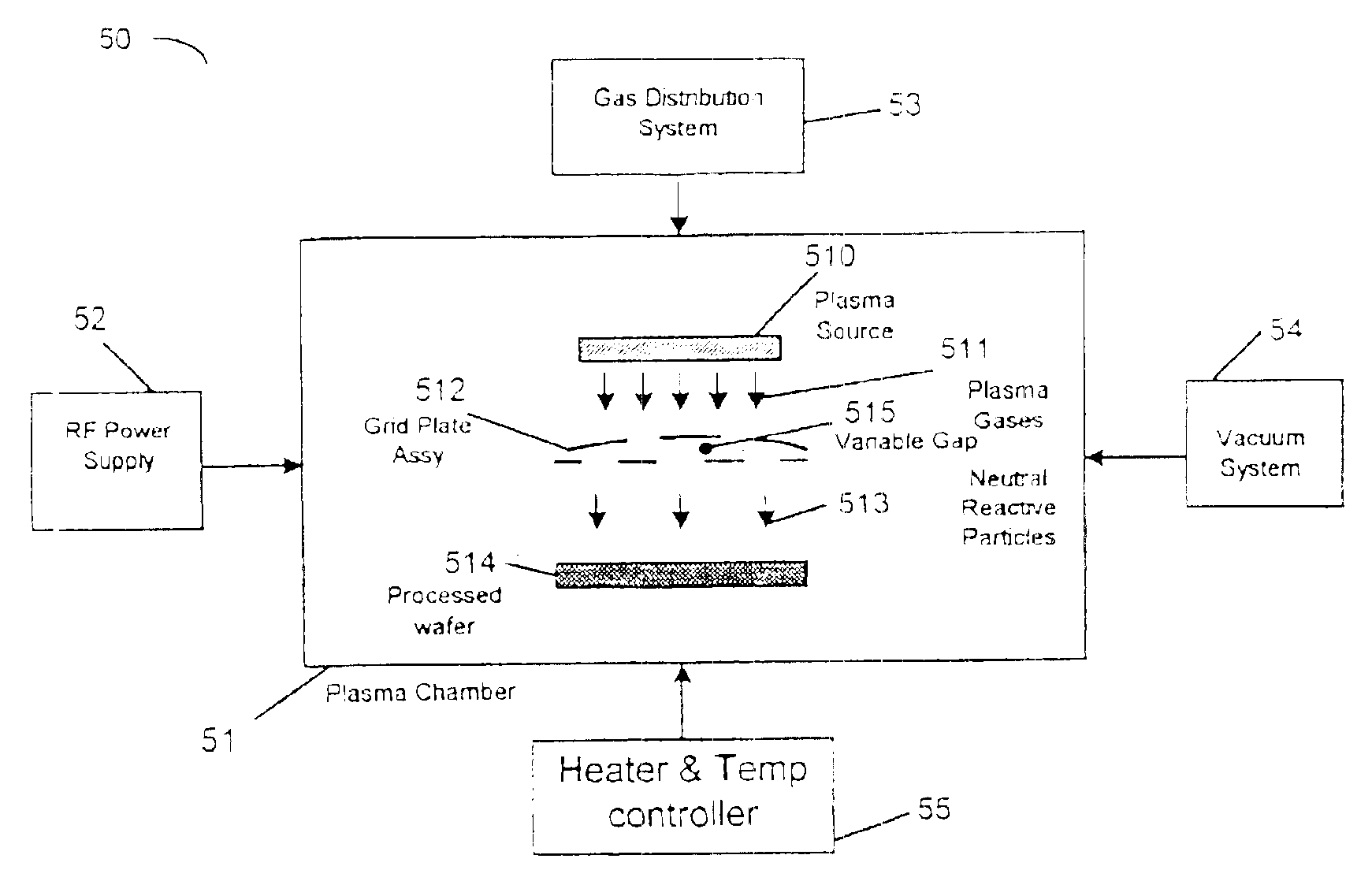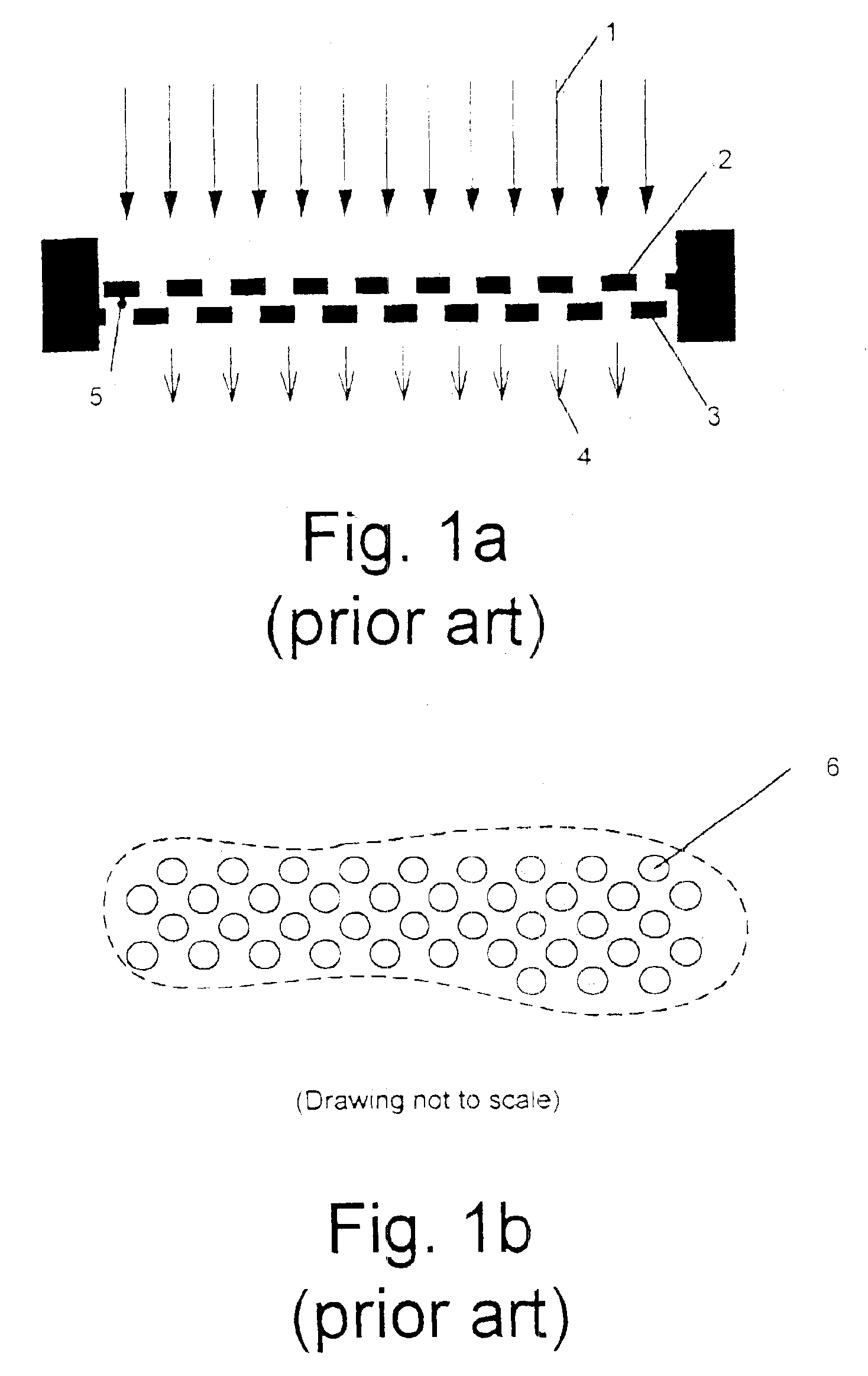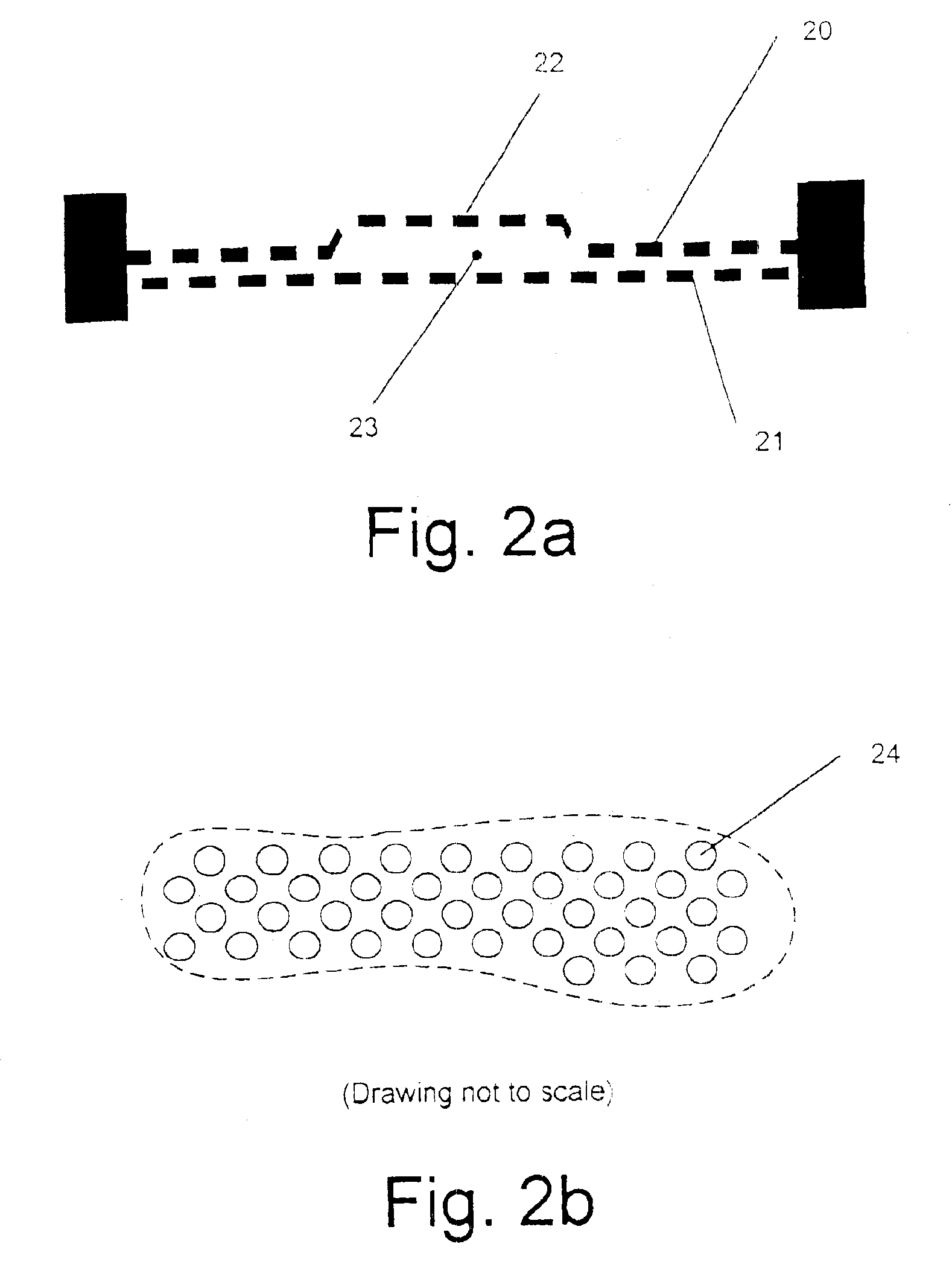Method for improving ash rate uniformity in photoresist ashing process equipment
a technology of photoresist ashing and uniform ash rate, which is applied in the direction of ovens, lighting and heating apparatus, furniture, etc., can solve the problems of exhibiting an ash rate non-uniformity and reducing the photoresist removal rate from the edge to the center of the wafer
- Summary
- Abstract
- Description
- Claims
- Application Information
AI Technical Summary
Benefits of technology
Problems solved by technology
Method used
Image
Examples
first embodiment
[0021]FIG. 2a shows the invention where the grid plate separation gap is made larger in a stepwise manner over the center region of the target wafer. The grid plates are comprised of an upper plate 20 and a lower plate 21 and are separated by a gap 23. In this case, a stepwise impression 22 is made in the center portion of the upper grid plate 20. This in turn, provides larger gap spacing 23 to be employed over the center of the target wafer. FIG. 2b shows the hole pattern 24, which maintains equal sized holes in the upper and lower grid plates 20 and 21, respectively. Gap spacing typically varies in the neighborhood of 0.035 to 0.050 inches. The wider gap near the center of the grid plates allows greater amounts of plasma gases to flow in this normally semi-stagnated area located around the center of the target wafer.
second embodiment
[0022]More accurate control of the ash rate uniformity is realized in this invention, as shown in FIGS. 3a and 3b. Here the gap 32 between upper grid plate 30 and lower grid plate 31 varies continuously from edge-to-center of the grid plate assembly. This eliminates the step function of embodiment one and provides more uniform plasma gas flow over the entire target wafer. As illustrated in FIG. 3b, the grid plate holes 33 are all of equal size. As before, the grid plate gap spacing varies in the range of 0.035 to 0.050 inches.
third embodiment
[0023]the invention is depicted in FIGS. 4a and 4b. In this case the grid plates 40 and 41 maintain a constant gap spacing 42, but the hole diameters 43 vary across the plates from edge-to-center, with the larger holes located near the center. The overall effect of this approach is the same as the earlier embodiments in that the plasma gas flow rate is increased in the semi-stagnation area near the center of the target wafer.
[0024]FIG. 5 is a block diagram for a plasma ashing machine 50, which uses the grid plate assembly 512 of this invention. This machine is comprised of a plasma chamber 51 with other necessary sources connected to the chamber, including a RF power supply 52, a gas distribution system 53, a vacuum system 54, and a heater and temperature controller 55. These sources are combined to control the environment inside the plasma chamber 51. The wafer 514 to be processed (work piece) is placed in the plasma chamber 51. Plasma gases 511 from the plasma source 510 are appli...
PUM
| Property | Measurement | Unit |
|---|---|---|
| Length | aaaaa | aaaaa |
| Fraction | aaaaa | aaaaa |
| Temperature | aaaaa | aaaaa |
Abstract
Description
Claims
Application Information
 Login to View More
Login to View More - R&D
- Intellectual Property
- Life Sciences
- Materials
- Tech Scout
- Unparalleled Data Quality
- Higher Quality Content
- 60% Fewer Hallucinations
Browse by: Latest US Patents, China's latest patents, Technical Efficacy Thesaurus, Application Domain, Technology Topic, Popular Technical Reports.
© 2025 PatSnap. All rights reserved.Legal|Privacy policy|Modern Slavery Act Transparency Statement|Sitemap|About US| Contact US: help@patsnap.com



